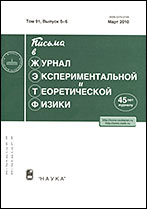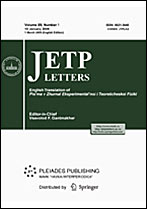|
Эта публикация цитируется в 17 научных статьях (всего в 17 статьях)
ПОЛЯ, ЧАСТИЦЫ, ЯДРА
How learn the branching ratio
$X(3872) \to D^{*0}\bar D^0 + \text{c.c.}$
N. N. Achasova, E. V. Rogozinaab
a Sobolev Institute of Mathematics, Siberian Branch of the Russian Academy of Sciences, Novosibirsk
b Novosibirsk State University
Аннотация:
Enfant terrible of charmonium spectroscopy, the
resonance $X(3872)$, generated a stream of interpretations and
ushered in a new exotic $XYZ$ spectroscopy. In the
meantime, many (if not all) characteristics of
$X(3872)$ are rather ambiguous. We construct spectra of decays of
the resonance $X(3872)$ with good analytical and unitary
properties which allows to define the branching ratio of the
$X(3872) \to D^{*0}\bar D^0 + \text{c.c.}$ decay studying only one more
decay, for example, the $X(3872)\to\pi^+\pi^- J/\psi(1S)$ decay.
We next define the range of values of the coupling constant of the
$X(3872)$ resonance with the $D^{*0}\bar D^0$ system. Finally, we
show that our spectra are effective means of selection of models
for the resonance $X(3872)$.
Поступила в редакцию: 24.06.2014
Образец цитирования:
N. N. Achasov, E. V. Rogozina, “How learn the branching ratio
$X(3872) \to D^{*0}\bar D^0 + \text{c.c.}$”, Письма в ЖЭТФ, 100:4 (2014), 252–255; JETP Letters, 100:4 (2014), 227–231
Образцы ссылок на эту страницу:
https://www.mathnet.ru/rus/jetpl4096 https://www.mathnet.ru/rus/jetpl/v100/i4/p252
|


|





 Обратная связь:
Обратная связь: Пользовательское соглашение
Пользовательское соглашение
 Регистрация посетителей портала
Регистрация посетителей портала Логотипы
Логотипы








 Цитирование в формате
Цитирование в формате 
